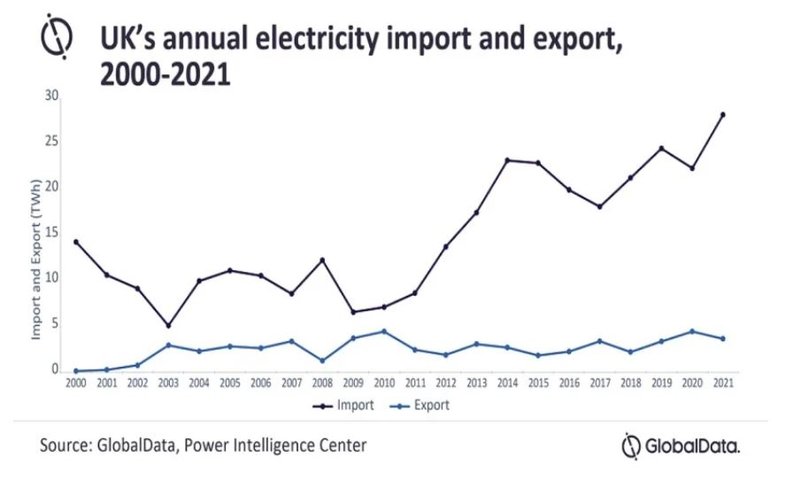UK faces power supply security questions following Brexit and Russia-Ukraine crisis
In 2021, renewable power generation held a 39.4% share in the total power generation of the country, increasing from a 6.2% share in 2010, raising optimism about the future of UK power.
One of GlobalData’s latest reports, ‘United Kingdom Power Market Outlook to 2035, Update 2022 – Market Trends, Regulations, and Competitive Landscape’, discusses the power market structure of the UK and provides historical and forecast numbers for capacity, generation and consumption up to 2035.
As a result of Brexit and its reliance on imports from the common EU market, the UK is now facing questions regarding higher energy prices and an unreliable supply of electricity. To combat this, the government needs to make substantial investments to meet more of its electricity demands by using renewable sources.
Diverse generation
The UK generates power from a diverse range of sources, including coal, gas, oil, hydropower, renewables and nuclear power. Thermal power is its main source of power generation and gas-fired power plants constitute most of its thermal capacity. The UK is actively involved in power exchanges with several European countries, although in more recent years this has been characterised by a rather unsteady power import pattern.
The recent Russia-Ukraine conflict raised questions surrounding the reliability of these imports. Although the UK does not rely heavily on Russia for its gas imports, it is not immune to the high prices caused by the conflict. Moreover, the UK has imposed sanctions on Russia, which will leave a gap that renewables will most likely fill.
According to the UK’s Energy and Climate Intelligence Unit, the energy bills in the country could rise to $3,157.53 (£2,520) in October 2022, a $632.76 (£505) increase from previously expected levels as an impact of the Russia-Ukraine crisis.

// Credit: GlobalData
Renewable commitments
The UK Government is committed to increasing the share of renewables in its energy mix and is introducing new policies and partnering up with private entities to drive the growth of renewable power in the electricity sector. In 2021, renewable power generation held a 39.4% share in the total power generation of the country, increasing from a 6.2% share in 2010.
The introduction of the Smart Export Guarantee and plans to increase renewable power capacity are also expected to create more opportunities in this sector.
However, the discovery of 1,300 trillion cubic feet of shale gas reserves in the north of England has changed the country’s priorities. Before this happened, it had been estimated that shale gas would constitute 76% of the UK’s energy imports in 2030, but following the discovery of the gas reserves, this was revised to 37%.
Shale gas is expected to extend the UK’s natural energy supply by 50 to 100 years at the current consumption rate, and while the shale gas industry is currently in the beginning stages in the UK, the government is preparing tax breaks and incentives to attract investment in this sector.
More broadly, the key drivers of the UK’s GDP growth have been insurance and business services. GDP rose from $2.481tn in 2010 to $2.843tn in 2021 at a CAGR of 1.2%, but the UK economy took a hit during the pandemic, with GDP declining by 9.7% in 2020 from 2019.
Backed by several funding programmes from the government, the economy recovered, with the GDP growing by 7.5% in 2021 from 2020. GDP is expected to reach pre-pandemic levels between 2022 and 2023.
// Main image: Grangemouth Refinery. Credit: orxy via Shutterstock
Comment